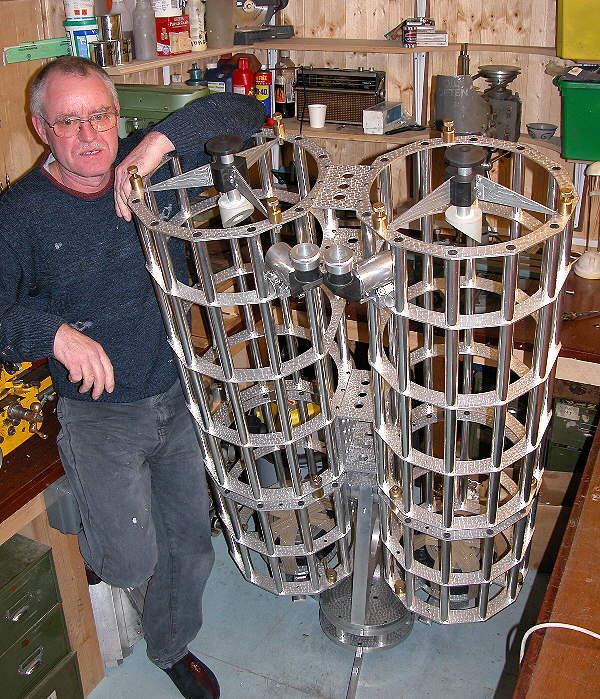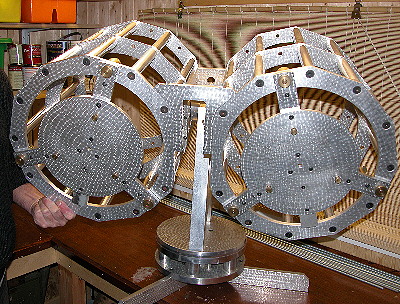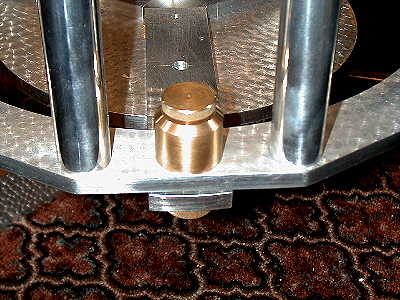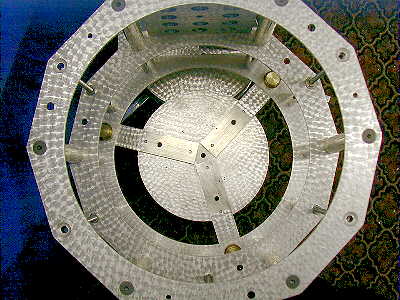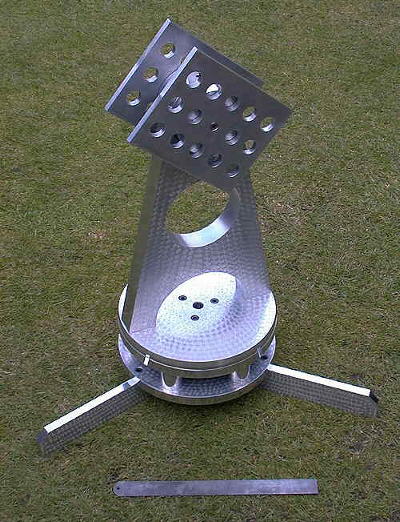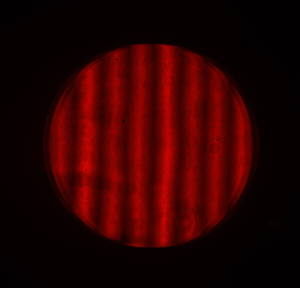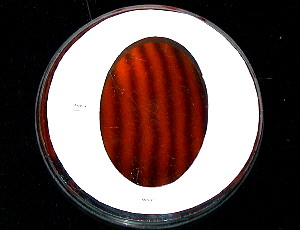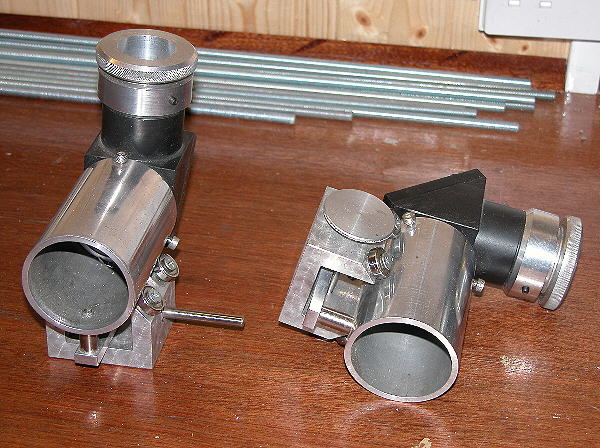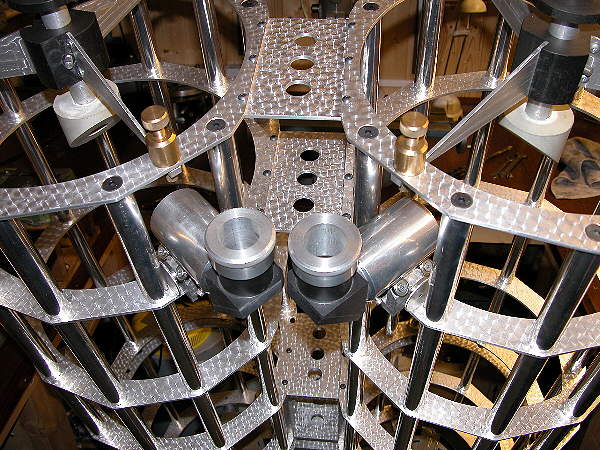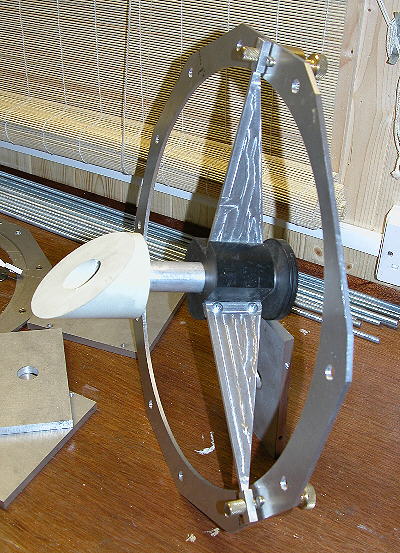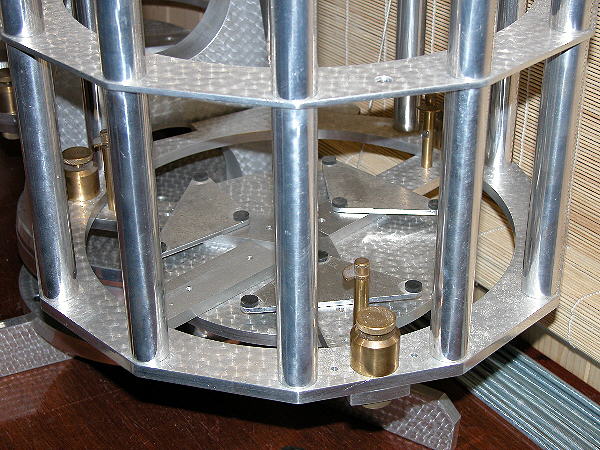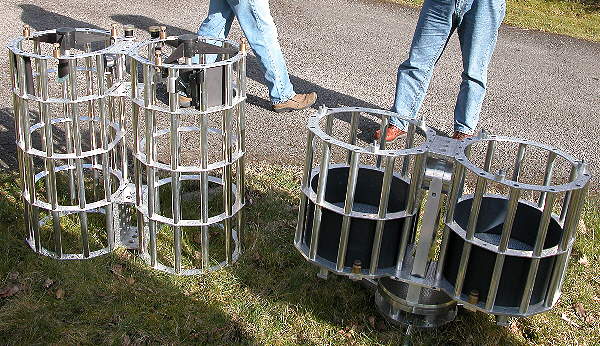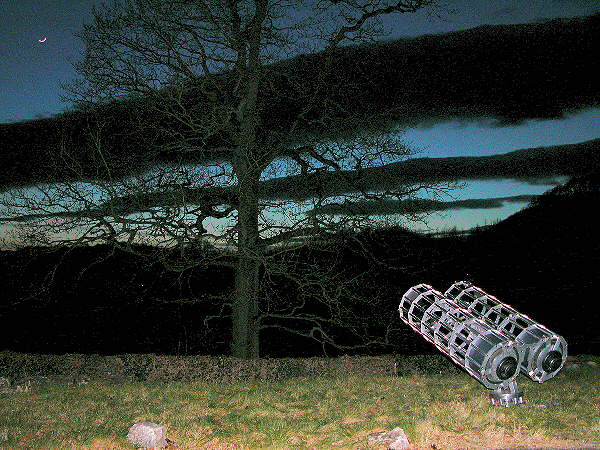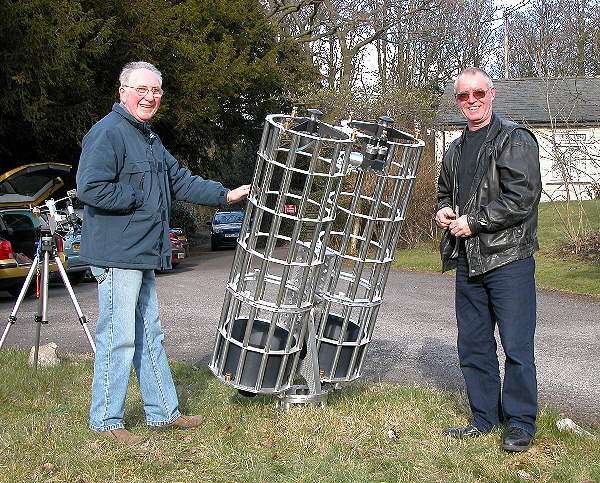|
I know, I know - we said 8-inch binoculars were the
optimum size for both use and transportation but....
aperture fever has struck again
The 12 inch binocular project took nearly 4 years!
Gerald got side-tracked into building a new workshop, kitchen, bathroom and driveway.
They are similar
to the 8-inch except the tubes are 12-sided instead of 6.
This was a major project, around 1000 hours work, and was completed March 2005.
First light was at our dark-sky observing night in March 2005.
There are just a few minor bits to add in the light of first use but nothing major.
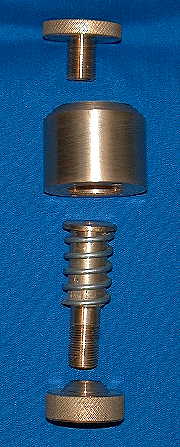
The push-pull adjuster for the mirror cell is a new idea
by Gerald using a contained (internally and externally)
spring. It is adjusted from the top unlike more
conventional adjusters. On one telescope they will extended
upwards to make them reachable from the eyepieces so final
collimatiom should be a one man job.
Unlike the 8-inch binos the eyepieces are not directly between the
two telescopes. They are brought out at 45 degrees. This saves a lot of space
and makes the binos much more compact ie not as wide as they would have been.
The finder is a simple red dot type and works excellently.
In combination with Pocket Stars on a Pocket PC objects can be quickly located.
|
